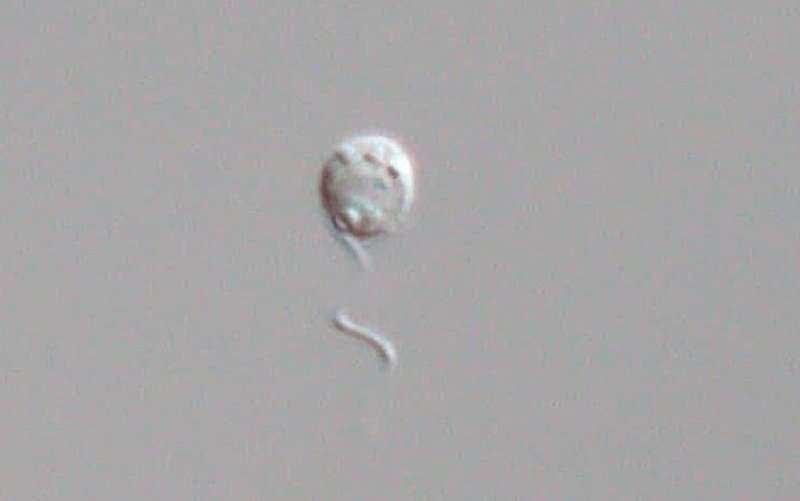Discovery of three novel Minorisa species, the smallest predatory marine picoplankton

Minorisa, a group of unicellular eukaryotes (protists), is renowned as one of the smallest predators in the world. These microorganisms are widely distributed in oceans, with a particular abundance in coastal regions, where they are believed to play a crucial role in marine ecosystems.
Moreover, their close association with chlorarachnion algae, possessing plastids, makes Minorisa essential for understanding how chlorarachnion algae acquired plastids. Nevertheless, until now, only one species, Minorisa minuta, had been formally described, and the absence of available culture strains hindered taxonomic investigations.
In a study in Phycological Research, researchers from the University of Tsukuba successfully isolated five cultured strains of Minorisa from seawater collected along Japanese coastlines. Detailed microscopic observations and comparisons of gene sequences were conducted.
All five isolates exhibited a distinctive feature of Minorisa, a single flagellum coiled spirally around the cell. However, there were variations in cell size and pseudopodia shape among the isolates. Additionally, the analysis of nucleotide sequences revealed that three out of the five strains were genetically distinct from M. minuta. These three new species were identified and named as M. fusiformis, M. magna, and M. megafusiformis.
This study has revealed the previously unknown diversity within the genus Minorisa. The culture strains identified in this study present promising opportunities for investigating the ecological role of Minorisa and gaining insights into the evolutionary processes associated with chloroplast acquisition in chlorarachnion algae.
More information: Takashi Shiratori et al, Molecular and morphological characterization of three novel Minorisa species (Chlorarachnea) and proposal for an emended description of the Minorisa minuta, Phycological Research (2023).
Provided by University of Tsukuba




















